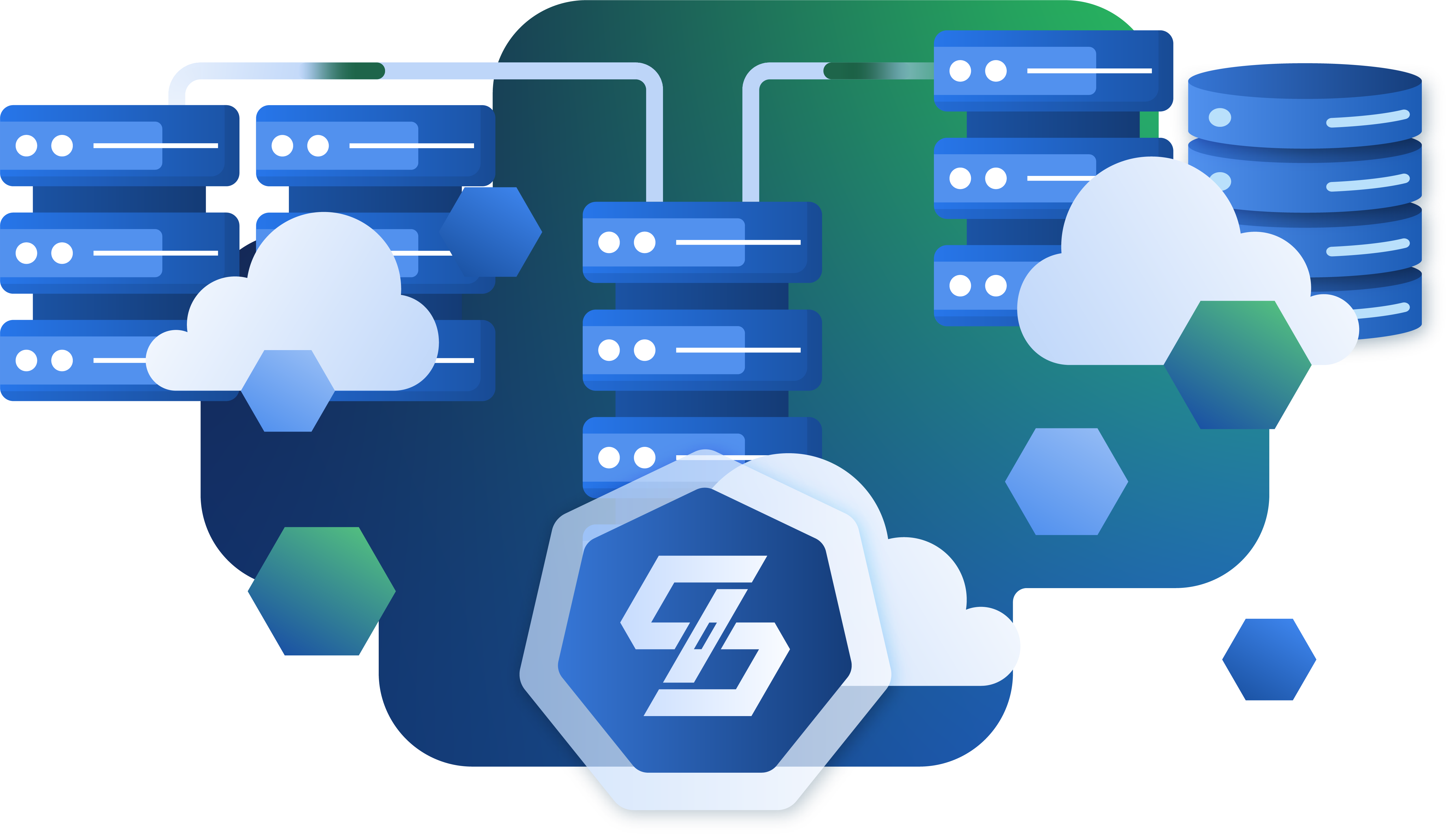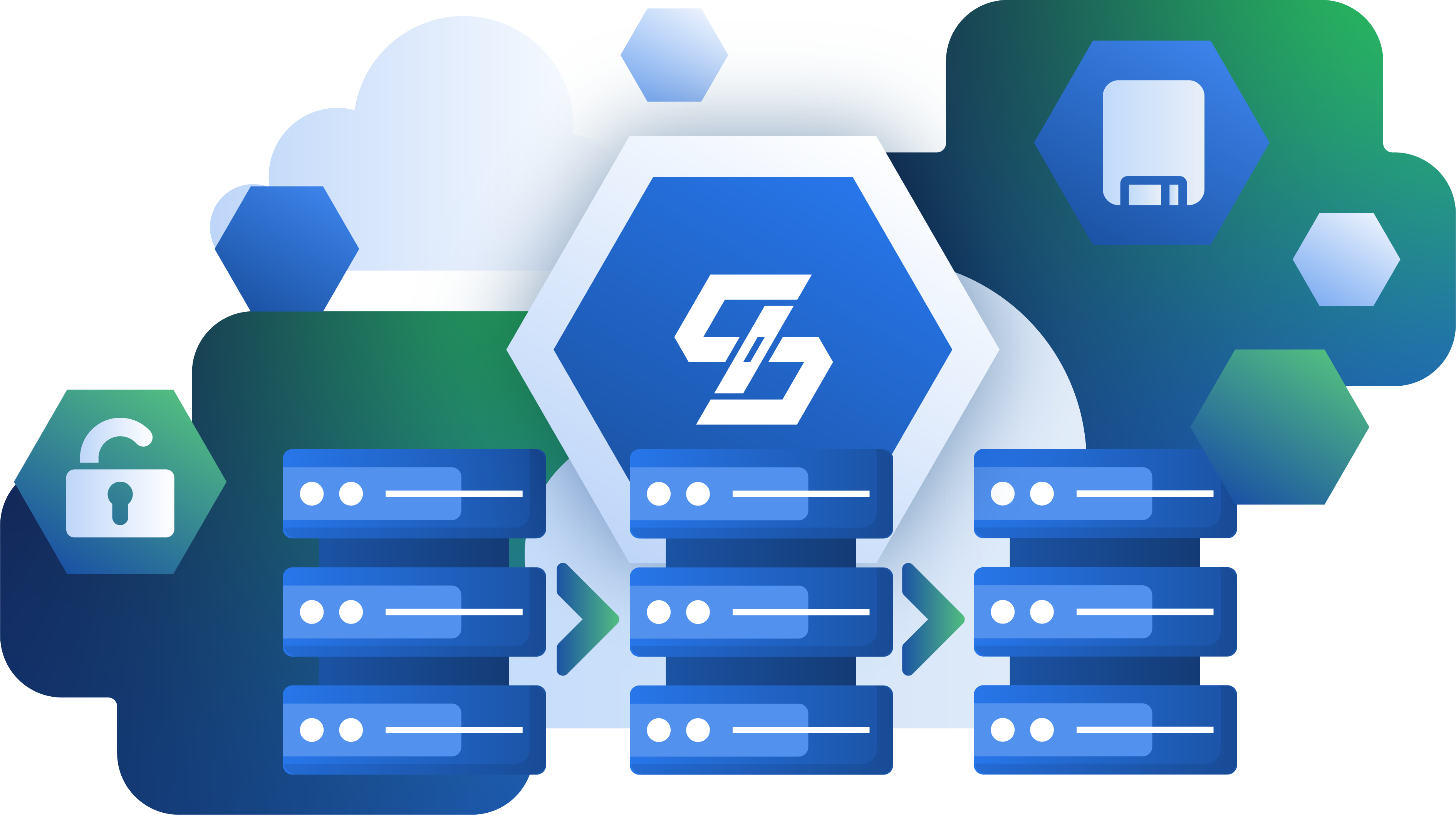NetApp Alternative
Smarter Architecture, Lower TCO and Real Deployment Freedom
If you're seeking an alternative to NetApp’s hardware-centric storage model, simplyblock™ delivers a faster, more flexible approach with true software-defined infrastructure—no hardware lock-in, no licensing traps, and no outdated controller bottlenecks. It’s designed for modern workloads that demand agility, efficiency, and seamless scalability across environments.

Challenges with NetApp
High Storage Costs
NetApp storage often demands proprietary hardware, licensing renewals, and premium service contracts, driving up long-term costs.
Scaling Complexity
Scaling NetApp systems typically requires controller upgrades, planned downtime, and disruptive infrastructure changes.
Deployment Rigidity
NetApp’s appliance-first model limits flexibility, making it harder to adapt to modern cloud-native and Kubernetes-based architectures.
Why Simplyblock™ Is the Best Alternative to NetApp
Built for today’s dynamic environments, simplyblock outpaces NetApp with faster performance, easier scaling, and full cloud-native support. Its architecture connects NVMe and cloud storage via NVMe-over-TCP, reducing latency and eliminating SAN overhead. With intelligent automation and lower operational friction, simplyblock delivers the efficiency and freedom legacy platforms can’t match.
Deployment Flexibility
NetApp’s appliance-driven approach supports traditional setups but often struggles to adapt to hybrid, cloud-native, or Kubernetes environments.
As the perfect alternative, simplyblock extends deployment options significantly—supporting disaggregated, hyperconverged, and hybrid models across Kubernetes clusters, bare-metal servers, and private clouds.
With simplyblock, storage infrastructure can scale freely—without forced hardware refreshes or restrictive deployment models.


Modern Architecture
While NetApp's architecture depends on controller-bound systems, simplyblock follows a true scale-out architecture. Every added node increases performance and capacity instantly, without the disruption of forklift upgrades.
Its distributed design avoids hardware bottlenecks, allowing infrastructure to grow fluidly alongside business needs.
By leveraging erasure coding and NVMe-over-TCP, simplyblock minimizes storage overhead and maximizes resilience—delivering faster, more efficient access without traditional limitations.
Key Benefits of Choosing Simplyblock™
Lower Ownership Costs
Simplyblock reduces storage expenses with standard x64 or ARM64 hardware and thin provisioning, avoiding costly licensing and forced hardware renewals.
High-Performance Storage
Built on NVMe-over-TCP, simplyblock delivers high throughput and low latency without SAN complexity or controller bottlenecks.
Flexible Deployment Options
Simplyblock fits seamlessly into Kubernetes, bare-metal, and hybrid environments, enabling flexible scaling with disaggregated or hyperconverged architectures.
Built-In Data Protection
Simplyblock ensures data resilience with erasure coding, QoS controls, integrity checks, and automated recovery across multi-tenant storage clusters.
Why Simplyblock Wins Over NetApp
| Simplyblock | NetApp | Details | |
|---|---|---|---|
| Commercial Support |
|
| Simplyblock offers direct support from its core development team. NetApp support often requires additional enterprise contracts. |
| Simplicity |
|
| Simplyblock uses native Linux NVMe-over-TCP, while NetApp involves complex licensing and management layers. |
| Deployment Flexibility |
|
| Simplyblock supports disaggregated, hyperconverged, and hybrid models. NetApp mainly focuses on appliance-bound deployments. |
| Cloud-Native Design |
|
| Simplyblock was built for Kubernetes and hybrid environments. NetApp's SAN/NAS models often limit cloud-native integration. |
| Commercial Support | |
|
Simplyblock
|
|
| Simplyblock offers direct support from its core development team. NetApp support often requires additional enterprise contracts. | |
| Simplicity | |
|
Simplyblock
|
|
| Simplyblock uses native Linux NVMe-over-TCP, while NetApp involves complex licensing and management layers. | |
| Deployment Flexibility | |
|
Simplyblock
|
|
| Simplyblock supports disaggregated, hyperconverged, and hybrid models. NetApp mainly focuses on appliance-bound deployments. | |
| Cloud-Native Design | |
|
Simplyblock
|
|
| Simplyblock was built for Kubernetes and hybrid environments. NetApp's SAN/NAS models often limit cloud-native integration. | |
| Simplyblock | NetApp | Details | |
|---|---|---|---|
| NVMe/TCP Acceleration |
|
| Simplyblock leverages NVMe-over-TCP natively for ultra-low latency. NetApp often relies on Fibre Channel and controller-bound systems. |
| IOPS Density |
|
| Simplyblock achieves over 200,000 IOPS per CPU core. NetApp scaling typically demands expensive controllers. |
| Horizontal Performance Scaling |
|
| Simplyblock expands performance by adding nodes instantly. NetApp requires controller upgrades or disruptive expansions. |
| Intelligent Caching |
|
| Simplyblock optimizes caching automatically. NetApp systems often require manual cache tuning or depend on controller models. |
| NVMe/TCP Acceleration | |
|
Simplyblock
|
|
| Simplyblock leverages NVMe-over-TCP natively for ultra-low latency. NetApp often relies on Fibre Channel and controller-bound systems. | |
| IOPS Density | |
|
Simplyblock
|
|
| Simplyblock achieves over 200,000 IOPS per CPU core. NetApp scaling typically demands expensive controllers. | |
| Horizontal Performance Scaling | |
|
Simplyblock
|
|
| Simplyblock expands performance by adding nodes instantly. NetApp requires controller upgrades or disruptive expansions. | |
| Intelligent Caching | |
|
Simplyblock
|
|
| Simplyblock optimizes caching automatically. NetApp systems often require manual cache tuning or depend on controller models. | |
| Simplyblock | NetApp | Details | |
|---|---|---|---|
| Hardware Cost |
|
| Simplyblock runs on commodity x64 and ARM64 hardware. NetApp solutions require branded, high-cost hardware. |
| Licensing Model |
|
| Simplyblock includes enterprise features by default. NetApp often charges separately for important capabilities. |
| Storage Efficiency |
|
| Simplyblock uses thin provisioning and automated tiering. NetApp efficiency varies based on appliance model. |
| Upgrade Costs |
|
| Simplyblock enables non-disruptive node addition. NetApp scaling often triggers costly hardware refresh cycles. |
| Hardware Cost | |
|
Simplyblock
|
|
| Simplyblock runs on commodity x64 and ARM64 hardware. NetApp solutions require branded, high-cost hardware. | |
| Licensing Model | |
|
Simplyblock
|
|
| Simplyblock includes enterprise features by default. NetApp often charges separately for important capabilities. | |
| Storage Efficiency | |
|
Simplyblock
|
|
| Simplyblock uses thin provisioning and automated tiering. NetApp efficiency varies based on appliance model. | |
| Upgrade Costs | |
|
Simplyblock
|
|
| Simplyblock enables non-disruptive node addition. NetApp scaling often triggers costly hardware refresh cycles. | |
| Simplyblock | NetApp | Details | |
|---|---|---|---|
| Data Protection |
| Simplyblock uses erasure coding for efficient, resilient storage. NetApp primarily uses traditional RAID schemes. | |
| Self-Healing |
| Simplyblock automatically rebuilds from failures. NetApp often requires administrator-driven recovery actions. | |
| Recovery Speed |
| Simplyblock enables near-instant recovery with minimal RPO. NetApp recovery depends heavily on model and configuration. | |
| Data Integrity Monitoring |
| Simplyblock monitors and corrects data consistency in real time. NetApp generally requires scheduled manual checks. |
| Data Protection | |
| Simplyblock |
|
| Simplyblock uses erasure coding for efficient, resilient storage. NetApp primarily uses traditional RAID schemes. | |
| Self-Healing | |
| Simplyblock |
|
| Simplyblock automatically rebuilds from failures. NetApp often requires administrator-driven recovery actions. | |
| Recovery Speed | |
| Simplyblock |
|
| Simplyblock enables near-instant recovery with minimal RPO. NetApp recovery depends heavily on model and configuration. | |
| Data Integrity Monitoring | |
| Simplyblock |
|
| Simplyblock monitors and corrects data consistency in real time. NetApp generally requires scheduled manual checks. | |
| Simplyblock | NetApp | Details | |
|---|---|---|---|
| Commercial Support |
|
| Simplyblock offers direct support from its core development team. NetApp support often requires additional enterprise contracts. |
| Simplicity |
|
| Simplyblock uses native Linux NVMe-over-TCP, while NetApp involves complex licensing and management layers. |
| Deployment Flexibility |
|
| Simplyblock supports disaggregated, hyperconverged, and hybrid models. NetApp mainly focuses on appliance-bound deployments. |
| Cloud-Native Design |
|
| Simplyblock was built for Kubernetes and hybrid environments. NetApp's SAN/NAS models often limit cloud-native integration. |
| Simplyblock | NetApp | Details | |
|---|---|---|---|
| NVMe/TCP Acceleration |
|
| Simplyblock leverages NVMe-over-TCP natively for ultra-low latency. NetApp often relies on Fibre Channel and controller-bound systems. |
| IOPS Density |
|
| Simplyblock achieves over 200,000 IOPS per CPU core. NetApp scaling typically demands expensive controllers. |
| Horizontal Performance Scaling |
|
| Simplyblock expands performance by adding nodes instantly. NetApp requires controller upgrades or disruptive expansions. |
| Intelligent Caching |
|
| Simplyblock optimizes caching automatically. NetApp systems often require manual cache tuning or depend on controller models. |
| Simplyblock | NetApp | Details | |
|---|---|---|---|
| Hardware Cost |
|
| Simplyblock runs on commodity x64 and ARM64 hardware. NetApp solutions require branded, high-cost hardware. |
| Licensing Model |
|
| Simplyblock includes enterprise features by default. NetApp often charges separately for important capabilities. |
| Storage Efficiency |
|
| Simplyblock uses thin provisioning and automated tiering. NetApp efficiency varies based on appliance model. |
| Upgrade Costs |
|
| Simplyblock enables non-disruptive node addition. NetApp scaling often triggers costly hardware refresh cycles. |
| Simplyblock | NetApp | Details | |
|---|---|---|---|
| Data Protection |
| Simplyblock uses erasure coding for efficient, resilient storage. NetApp primarily uses traditional RAID schemes. | |
| Self-Healing |
| Simplyblock automatically rebuilds from failures. NetApp often requires administrator-driven recovery actions. | |
| Recovery Speed |
| Simplyblock enables near-instant recovery with minimal RPO. NetApp recovery depends heavily on model and configuration. | |
| Data Integrity Monitoring |
| Simplyblock monitors and corrects data consistency in real time. NetApp generally requires scheduled manual checks. |
